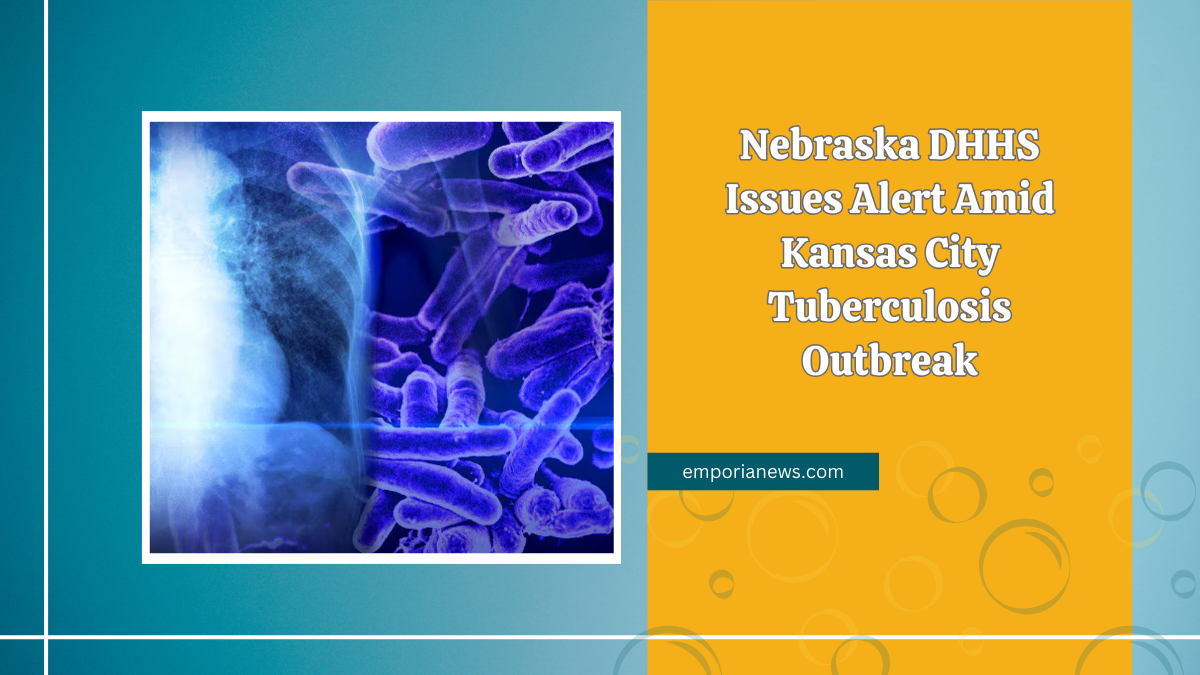The Nebraska Department of Health and Human Services (DHHS) has issued an alert concerning a significant tuberculosis (TB) outbreak in the Kansas City metropolitan area.
This development has raised concerns due to the proximity of the outbreak to Nebraska and the potential implications for public health.
Overview of the Outbreak
As of January 31, 2025, the Kansas Department of Health and Environment (KDHE) reported 67 confirmed cases of active TB disease in the Kansas City area, with 60 cases in Wyandotte County and seven in Johnson County.
Additionally, there are 79 confirmed cases of latent TB infection, primarily in Wyandotte County. Latent TB is non-infectious but can progress to active disease if untreated. The outbreak, which began in early 2024, has resulted in two fatalities.
Nebraska’s Current Situation
Nebraska has observed an increase in TB cases, reporting 34 cases in 2023 and a provisional count of 41 cases in 2024, marking a 20-year high for the state.
Despite this rise, there is currently no evidence linking Nebraska’s cases to the Kansas City outbreak. The DHHS emphasizes the importance of vigilance and proactive measures to prevent potential spread.
Understanding Tuberculosis
Tuberculosis is a bacterial infection caused by Mycobacterium tuberculosis, primarily affecting the lungs but capable of impacting other organs. It spreads through airborne particles when an infected person coughs or sneezes.
Symptoms of active TB include a persistent cough, chest pain, fever, night sweats, and weight loss. In contrast, individuals with latent TB do not exhibit symptoms and are not contagious but require treatment to prevent progression to active disease.
Preventative Measures and Recommendations
The Nebraska DHHS advises healthcare providers and the public to consider the following actions:
- Awareness and Diagnosis: Clinicians should maintain a high index of suspicion for TB, especially in patients presenting with consistent symptoms or those with a history of exposure.
- Testing and Treatment: Individuals exposed to active TB cases should undergo testing for latent TB infection. Early detection and appropriate treatment are crucial to prevent the progression and spread of the disease.
- Public Health Collaboration: Healthcare providers are required to report all suspected cases of active TB to the KDHE Epidemiology Hotline within four hours of suspicion. Cases of latent TB infection should be reported to both the local health department and KDHE within 24 hours.
| Location | Active TB Cases | Latent TB Cases | Deaths |
|---|---|---|---|
| Kansas City Area | 67 | 79 | 2 |
| Nebraska (2024) | 41 | Data not specified | 0 |
The Nebraska DHHS’s alert underscores the importance of awareness and proactive measures in light of the TB outbreak in the Kansas City area.
While Nebraska has not reported cases linked to this outbreak, the increase in state TB cases calls for continued vigilance.
Healthcare providers and the public are encouraged to collaborate closely to ensure early detection, reporting, and treatment of TB to safeguard community health.
FAQs
What is the difference between active and latent TB?
Active TB is symptomatic and contagious, while latent TB is asymptomatic and non-contagious but can develop into active TB if untreated.
How is TB transmitted?
TB spreads through the air when an infected person coughs, sneezes, or speaks, releasing bacteria into the air.
Are there any TB cases in Nebraska linked to the Kansas City outbreak?
Currently, no TB cases in Nebraska have been linked to the Kansas City outbreak.




